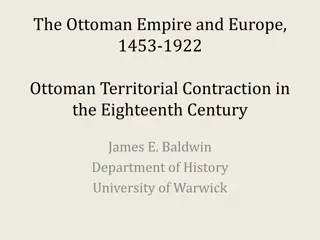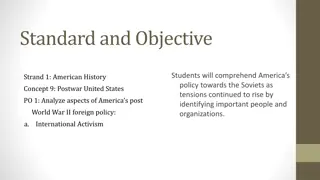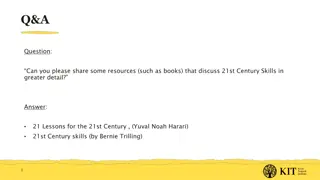America's Evolving Relationship with the World at the Turn of the Twentieth Century
America's development of an empire, involvement in Latin America, the Spanish-American War, the Chinese Exclusion Act, and the construction of the Panama Canal were significant events shaping the country's global interactions during the early 1900s.
Download Presentation

Please find below an Image/Link to download the presentation.
The content on the website is provided AS IS for your information and personal use only. It may not be sold, licensed, or shared on other websites without obtaining consent from the author.If you encounter any issues during the download, it is possible that the publisher has removed the file from their server.
You are allowed to download the files provided on this website for personal or commercial use, subject to the condition that they are used lawfully. All files are the property of their respective owners.
The content on the website is provided AS IS for your information and personal use only. It may not be sold, licensed, or shared on other websites without obtaining consent from the author.
E N D
Presentation Transcript
SSUSH14 The student will explain Americas evolving relationship with the world at the turn of the twentieth century. a. Explain the Chinese Exclusion Act of 1882 and anti- Asian immigration sentiment on the west coast. Chinese immigrants were coming to the U.S. on the west coast (Angel Island). Worked on railroads and took lower wages for jobs. This created an anti-Asian sentiment among native-born Americans who feared that jobs would go to Chinese immigrants. In 1882, Congress passed the Chinese Exclusion Act, which banned all future immigration from China except students, teachers, tourists, merchants, & gov t officials. Was not repealed until 1943.
b. Describe the Spanish-American War, the war in the Philippines, and the debate over American expansionism. Spanish-American War (1898) In 1895 Jose Marti (Cuba) started another revolution against Spain. Spain responded by sending in Valeriano Weyler, who put nearly 300,000 Cubans in concentration camps. U.S. helps Cuba Causes of War Yellow Journalism - exaggerating or stretching the truth DeLome Letter Private letter from Spanish minister to the U.S. which insulted Pres. McKinley. Sinking of the USS Maine U.S. battleship explodes while sitting in the harbor of Habana, Cuba. U.S. blames Spain. April 1898 U.S. declares war on Spain
b. Describe the Spanish-American War, the war in the Philippines, and the debate over American expansionism. Treaty of Paris (1898) Ended war with following terms: Cuba is independent U.S. gets Puerto Rico, Guam, and the Philippines U.S. pays Spain $20 million As a result of the Sp-Am War: U.S. now owns an empire Ends U.S. isolationism U.S. emerges as a world power Philippine-American War After Sp-Am War, Filipinos were angry that the U.S. simply replaced the Spanish as a controlling power Emilio Aguinaldo led a revolt against U.S. forces in 1899.
b. Describe the Spanish-American War, the war in the Philippines, and the debate over American expansionism. War lasted 3 years, killing nearly 25,000 people. U.S. gave Philippines partial home rule 1946 given complete independence American Expansionism Many were concerned about America s expansionism and continued involvement in Latin America.
c. Explain U.S. involvement in Latin America, as reflected by the Roosevelt Corollary to the Monroe Doctrine and the creation of the Panama Canal Panama Canal - A canal built by the U.S. cutting across Central America to reduce travel time and provide a short cut between the oceans for commercial and military ships. U.S. chose Panama for the canal, which belonged to Colombia. They refused our offer wanted more $. US helps Panama rebel against Colombia Panama accepts our offer ($10m and $250,000 a year) Canal built between 1904-1914
c. Explain U.S. involvement in Latin America, as reflected by the Roosevelt Corollary to the Monroe Doctrine and the creation of the Panama Canal Roosevelt Corollary European powers were getting involved in Latin America TR wanted US to be the most powerful influence in Latin Am. Based on the African proverb Speak softly and carry a big stick The Roosevelt Corollary stated: the U.S. would use force to protect its economic interests in Latin America























